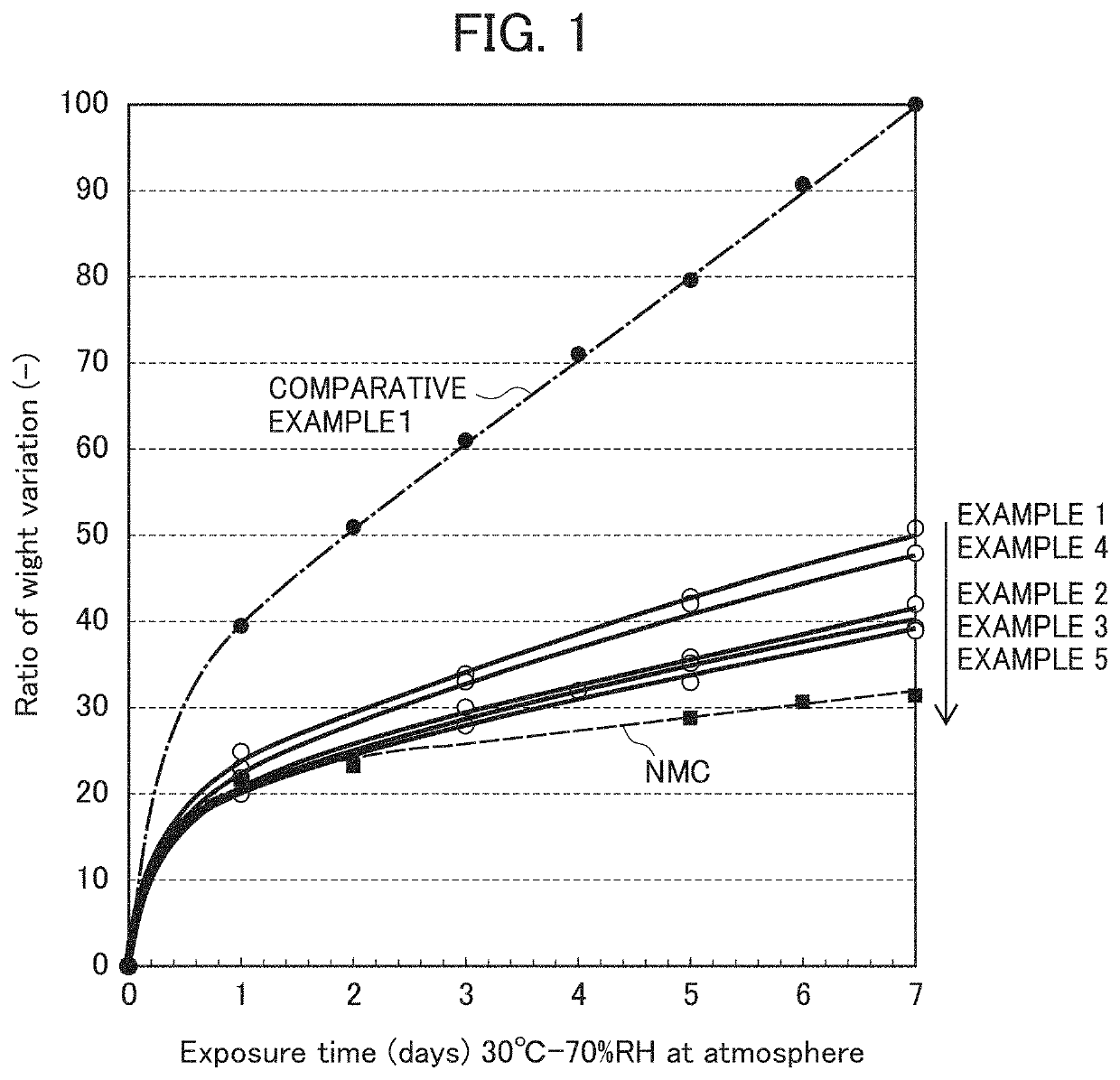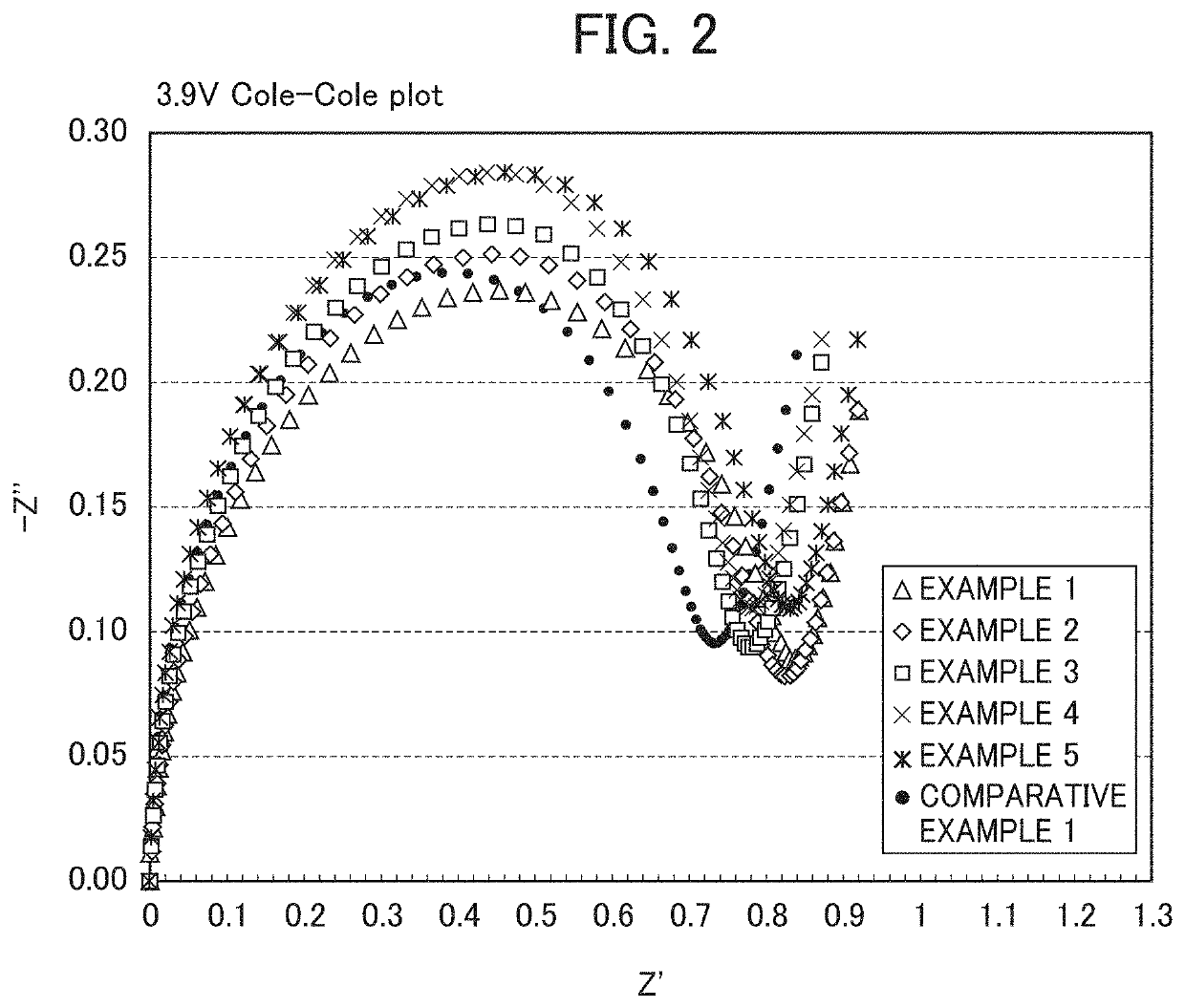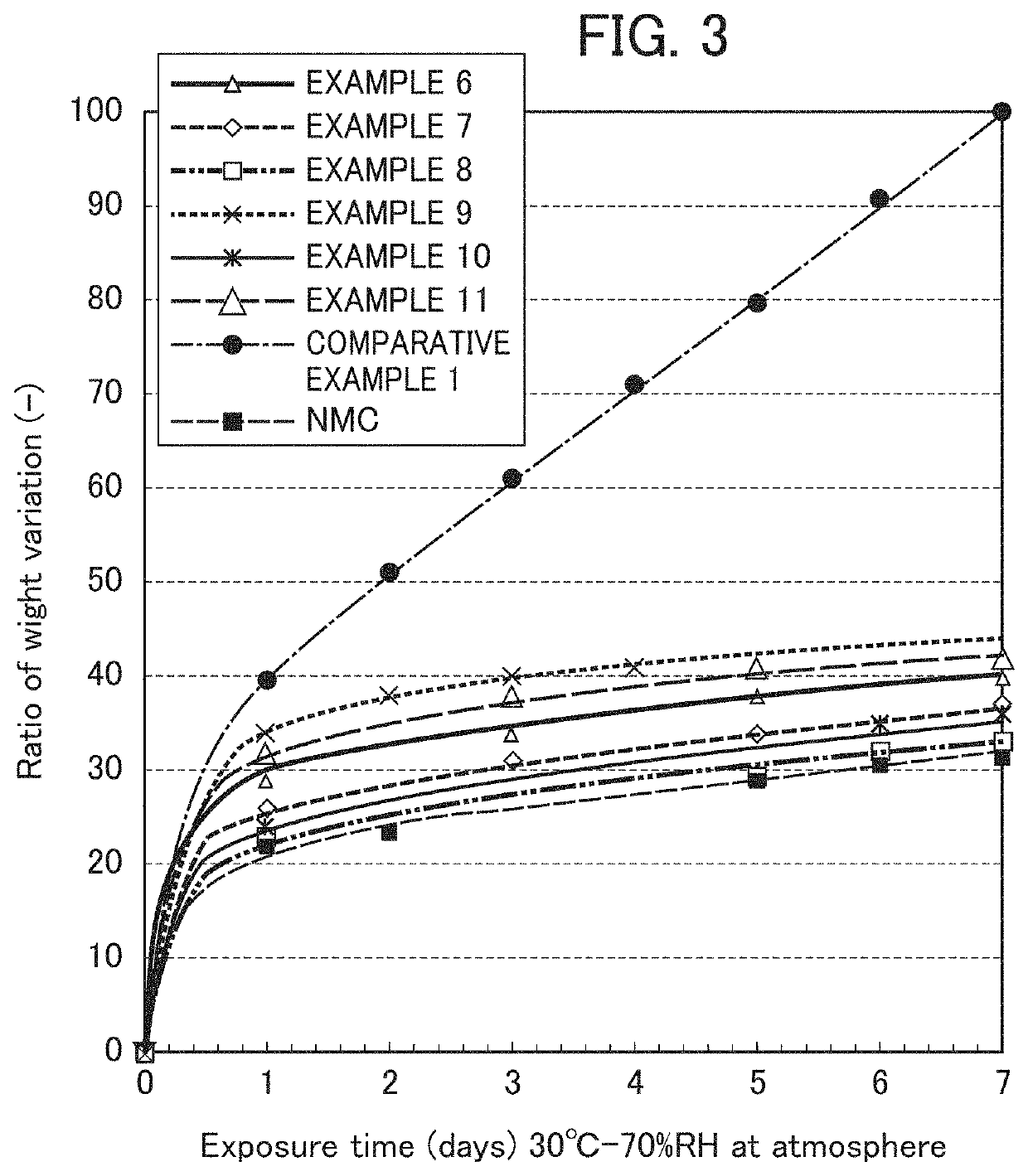Covered lithium-nickel composite oxide particles, and method for manufacturing covered lithium-nickel composite oxide particles
a lithium-nickel oxide and composite oxide technology, which is applied in the direction of positive electrodes, active material electrodes, cell components, etc., can solve the problems of lithium-nickel oxide safety, cycle characteristics, and use as a practical battery, and achieve favorable electron conductivity and lithium ion conductivity, suppress moisture penetration, and the effect of reducing the number o
- Summary
- Abstract
- Description
- Claims
- Application Information
AI Technical Summary
Benefits of technology
Problems solved by technology
Method used
Image
Examples
example 1
[0142]0.07 g (solid content: 35.7%) of a modified polyethylene resin solution and 0.025 g of lignin graft type powder, polyaniline (emeraldine salt) manufactured by Sigma-Aldrich Co. LLC were dissolved in 150 g of ethanol, and into the resultant mixture, 16 g of toluene was further added and mixed to prepare a coating solution. This solution was transferred to a flask, and as nickel-based lithium-nickel composite oxide particles, 25 g of the composite oxide particles represented by the transition metal composition of Li1.03Ni0.82Co0.15Al0.03 was placed in the flask and mixed to prepare a slurry. Next, the flask in which the slurry had been placed was connected with an evaporator, and under reduced pressure, the flask part was placed in a water bath warmed to 45° C. and the ethanol was removed while rotating the flask. Subsequently, the preset temperature of the water bath was set to 60° C., and the toluene was removed. In the end, in order to remove the solvent thoroughly, the powde...
example 2
[0144]Into a solution in which 0.07 g (solid content: 35.5%) of a polyester resin solution (product name: ARAKYD 7005N) manufactured by Arakawa Chemical Industries, Ltd. had been dissolved in 75 g of toluene, a solution in which 0.025 g of lignin graft type powder, polyaniline (emeraldine salt) manufactured by Sigma-Aldrich Co. LLC had been dissolved in 75 g of ethanol was mixed, and into the resultant mixture, 16 g of isopropyl alcohol was further added and mixed to prepare a coating solution. This solution was transferred to a flask, and as nickel-based lithium-nickel composite oxide particles, 25 g of the composite oxide particles represented by the transition metal composition of Li1.03Ni0.82Co0.15Al0.03 was placed in the flask and mixed to prepare a slurry. Next, the flask in which the slurry had been placed was connected with an evaporator, and under reduced pressure, the flask part was placed in a water bath warmed to 60° C. and the solvent was removed while rotating the flas...
example 3
[0146]Into a solution in which 0.05 g (solid content: 50.0%) of a polyphenol resin solution (product name: ARAKYD 7104) manufactured by Arakawa Chemical Industries, Ltd. had been dissolved in 75 g of xylene, a solution in which 0.025 g of lignin graft type powder, polyaniline (emeraldine salt) manufactured by Sigma-Aldrich Co. LLC had been dissolved in 75 g of ethanol was mixed, and into the resultant mixture, 16 g of isopropyl alcohol was further added and mixed to prepare a coating solution. This solution was transferred to a flask, and as nickel-based lithium-nickel composite oxide particles, 25 g of the composite oxide particles represented by the transition metal composition of Li1.03Ni0.82Co0.15Al0.03 was placed in the flask and mixed to prepare a slurry. Next, the flask in which the slurry had been placed was connected with an evaporator, and under reduced pressure, the flask part was placed in a water bath warmed to 60° C. and the solvent was removed from the slurry while ro...
PUM
| Property | Measurement | Unit |
|---|---|---|
| particle diameter | aaaaa | aaaaa |
| electrode energy density | aaaaa | aaaaa |
| electrode energy density | aaaaa | aaaaa |
Abstract
Description
Claims
Application Information
 Login to View More
Login to View More - R&D
- Intellectual Property
- Life Sciences
- Materials
- Tech Scout
- Unparalleled Data Quality
- Higher Quality Content
- 60% Fewer Hallucinations
Browse by: Latest US Patents, China's latest patents, Technical Efficacy Thesaurus, Application Domain, Technology Topic, Popular Technical Reports.
© 2025 PatSnap. All rights reserved.Legal|Privacy policy|Modern Slavery Act Transparency Statement|Sitemap|About US| Contact US: help@patsnap.com



